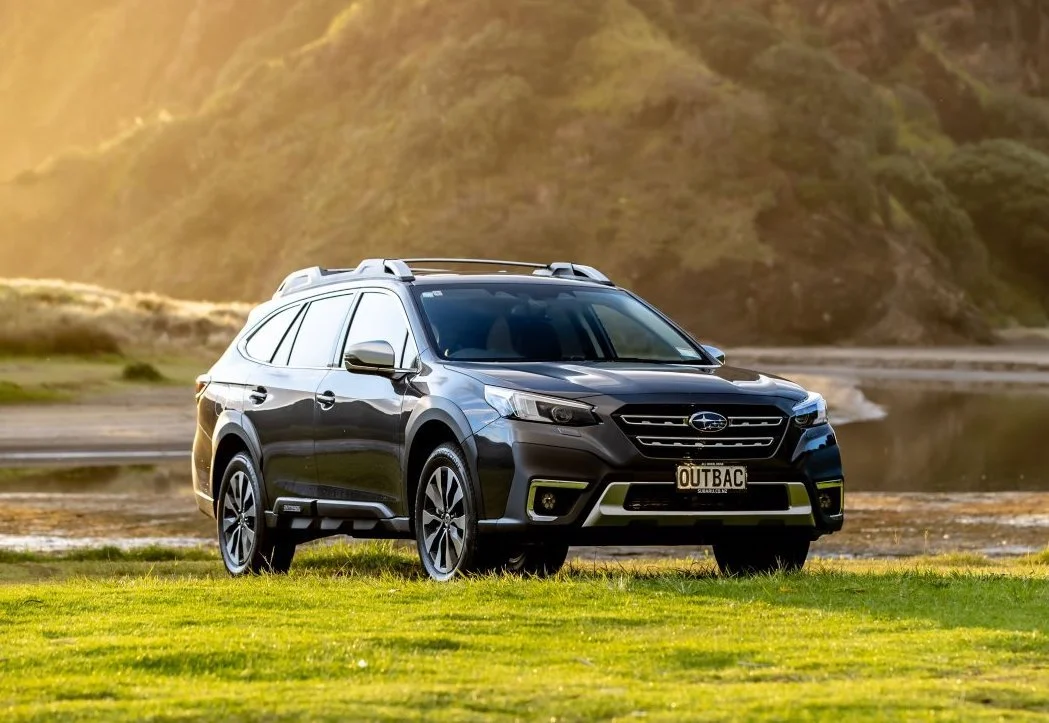Turbo Outback lands, prices climb
/Subaru NZ ratchets up Clean Car price impact comment
PRICING for a new Outback derivative has readjusted to include a distributor-level emissions penalty – but Subaru’s cajoling of consumers to buy ahead of availability and save has had desired effect.
It’s more than three months since Subaru New Zealand opened the order book for the XT Turbo and XT Turbo Touring variants with a 183kW/350Nm 2.4-litre four-cylinder, initially with expectation the models would land in December – just a month before the Clean Car Standard, the next step of Government’s emissions legislation, was due to implement.
As it transpired, the first shipment has only just come in and while the legislation and the sting Subaru NZ feels from selling it, a CO2 penalty additional to the emissions payment that buyers of new smutty cars have copped since April 1, is now enacted, infrastructure challenges mean payments aren’t required until mid-July.
However it says more than 100 purchasers took advantage of the pre-CCS pricing, which has now been cut.
On announcing that the car is now in the showroom, Subaru NZ has also said the base model XT Turbo now assumes the price originally assigned to XT Turbo Touring, while the latter has gone to $71,990.
This further increases the spending gap between the turbos and the Outback derivatives that released in 2021 with a normally-aspirated 2.5 litre and remain available. At original sticker, the turbo models were $3000 and $8000 more than the dearest of the three editions with the 138kW and 245Nm 2.5.
The turbo cars’ costs exclude on-road costs, but Subaru NZ says it includes the Clean Car Standard, which between now and 2027 increasingly regulates importers to reduce CO2 emissions to specific targets.
This will hit distributors who fail to meet CO2 targets with penalties that are additional, and higher, than those already being copped by anyone buying a car or light vehicle emitting 192 grams per kilometre or more.
Numerous brands are affected by CCS; whose ultimate intent to is to restrict new vehicle availability to low or no emissions types – on strength of current technology, that’s basically vehicles with partial or full electric assistance.
Dissection of Subaru’s line-up reminds why it has been particularly vocal about its distaste. Although it is about to release a full electric model, the Solterra co-developed with Toyota (whose BZ4X comes later this year), it otherwise relies on product with petrol boxer engines whose CO2 counts will become increasingly troublesome.
Being its biggest seller, Outback makes for a good example for consideration. The 2.5’s emissions are presently exempt from a levy, at 168 grams per kilometre, but ultimately won’t be.
The turbo seems to already be in the penalty zone. Subaru NZ has yet to release a CO2 figure specific to the Outback application, brand-produced data cites the same engine in the WRX, where power is 19kW higher, as being problematic. The WRX engine has a CO2 count of 192 grams with the Lineartronic automatic that is standard to the Outback Turbo.
Subaru NZ’s boss Wallis Dumper admitted yesterday that the levy the turbo cops will progressively keep increasingly and, because of that, so too the price.
“The CCS impact will hit these cars year after year from now on, so anybody considering upgrading to a Subaru Outback XT should get their order in now, as come January 2024 the new CCS scale takes effect again.
“Then every January through to 2027 will see further impacts of the current CCS, with an increase in fees, if this legislation stays in place.”
He contends that, at current calculations, “if the CCS impacts as proposed by the NZ Government remain unchanged the increases could exceed ten thousand dollars on each model in a few years’ time.”
Subaru NZ says anyone forward ordering an Outback XT now will pay the 2023 price, so long as those vehicles arrive before December. The next shipment is due in May. The Auckland-based operator has also reminded the Subaru Japan is still be hit by component supply issues, which affects the production capability.
Dumper asserts the 100-plus buyers who signed up for the XT prior to December 31 are winners, as they “truly got a bargain.”
The turbo model effectively stands as a substitute for the six-cylinder 3.6-litre engine that used to go into Outback and had similar performance credential but was dropped due to poor economy and emissions.
Subaru has positioned the turbo less as a performance choice than as the best version yet for hauling boats and caravans, as the braked towing capacity of 2400kg is 400kg higher than the 2.5’s. It sees the wagon winning over people who may have discovered the ute they purchased for towing is not an ideal family vacation vehicle.
Says Dumper: “Even at the CCS impacted pricing, the Outback XT Turbo presents best value buying and savings over the alternative mode of what is essentially commercially based transportation.”
The entry edition has Nappa leather accented seat trim, an electric sunroof, a heated steering wheel, heated front and rear seats, Harman Kardon audio, a power tail gate with hands-free sensor,an 11.6 inch tablet-like touch screen with satellite navigation and driver monitoring with facial recognition to detect driver drowsiness or distraction. The DMS can also recognise up to five drivers to personalise the driver's seat, wing mirror and air conditioning preferences.
The XT Turbo has a more rugged styling package - dark metallic 18 inch alloy wheels, black grille, wing mirrors, rear badging and roof rails, green stitching on the water repellent synthetic leather seats, centre console, steering wheel and gear shift boot – plus also has a dual function X-Mode with deep snow and deep mud settings.



















